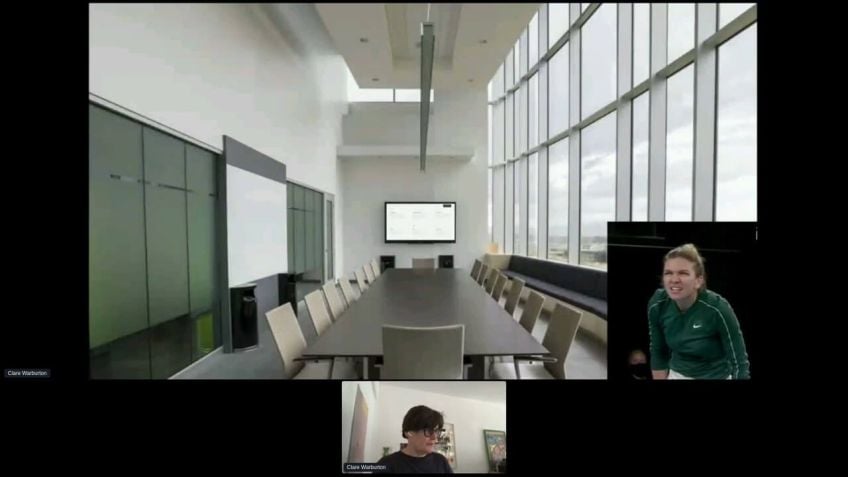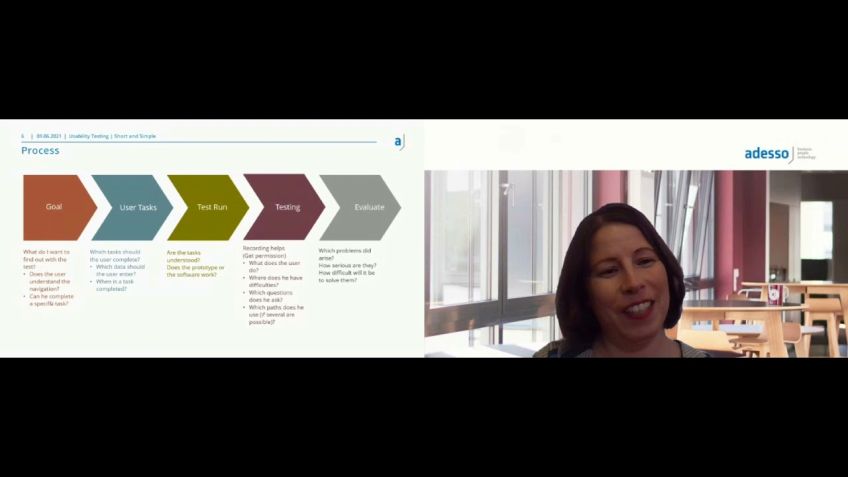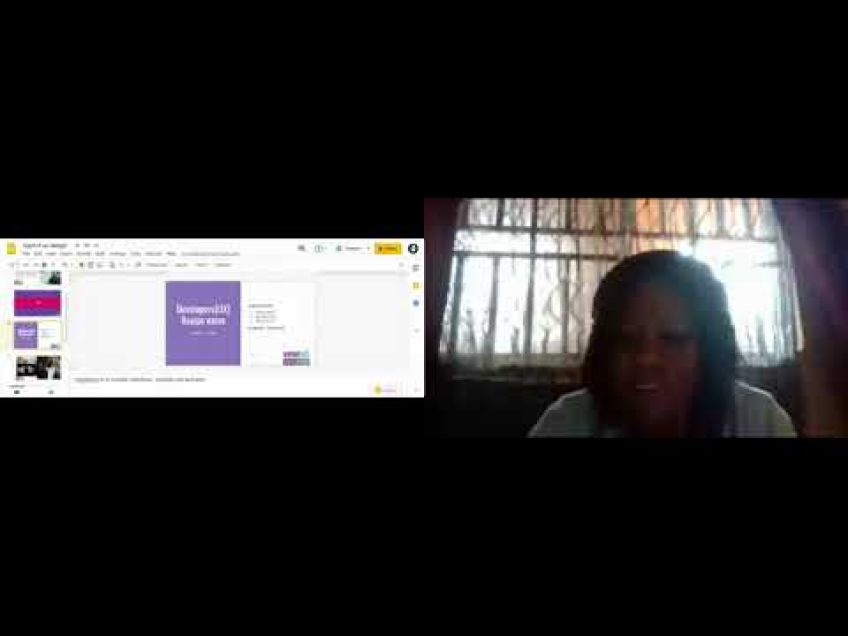Jasmine Orange Designing For The Ten Percent: How To Unbias Your Designs
Designing for the 10% - A Talk by Jasmine Orange
Hello everyone, my name is Jasmine Orange. I am a passionate UX designer currently practicing at Ernst and Young, and a proud graduate of industrial design at Virginia Tech. In this blog post, we delve into the concept of designing for the 10% and explore the importance of including the marginalized and neglected when conceptualizing and creating products and services. But first, a little about my background.
My Journey into Design
As a lifelong UX design enthusiast, I am incredibly excited about the intersection of digital and physical design. However, I am especially fascinated by design history and the patterns that emerge in this field.
The concept of "designing for the 10%" was something I first encountered during my studies, and it profoundly impacted my approach to design. Contrary to the initial presumption, the "10%" doesn't refer to the elite or the wealthy. Instead, it describes the most marginalized individuals in our society – those often overlooked or forgotten due to conscious or unconscious bias.
Understanding Conscious and Unconscious Bias
To understand how bias can filter into our designs, we first need to differentiate between conscious and unconscious bias. As described by Georgetown University, conscious bias involves intentional behaviors and attitudes towards certain groups, while unconscious bias is subtly ingrained in us by society, often without our awareness.
Because design tasks are predominantly undertaken by humans, who inherently possess biases, it's not far-fetched to assume that these biases can and do infiltrate the design process.
Drawbacks of Design Bias
When design bias seeps into our work, it can result in products that range from mildly inconvenient, to outright deadly for some users. I believe the solution lies in increasing diversity within design teams, and conscious inclusion of marginalized groups in the design process.
Breaking Barriers Through Compassionate Design
- Listen to Users: It is essential to genuinely listen to what your users are saying and understand their experiences from their perspective.
- Design for Everyone: Design efforts shouldn't be restricted to only the people who are designing, but should encompass a diverse set of users.
- Diverse Teams: As designers, we can't check ourselves for unconscious biases. Having a diverse team allows for a broad spectrum of opinions and perspectives that can tackle these biases.
Designing for the 10%: Real-world Examples
- Closed Captions: Initially designed for people with hearing impairments, they are now used by a wider audience for various reasons
- Push to Operate Doors:
- Voice and Accessibility Options: These options cater to users with different speech capabilities, ensuring all users can utilize devices effectively.
In conclusion, designing for the 10% isn't just about addressing the needs of the marginalized. If we pay attention to this 10%, we inevitably create solutions that benefit the majority too. I believe that design should ultimately serve everyone involved. Thank you for joining me in this discussion and exploration of inclusive and compassionate design.
If you'd like to continue this conversation, feel free to connect with me. I am always thrilled to meet new people and engage in enlightening discussions. Until then, happy designing!
Video Transcription
So my name is Jasmine Orange. I'm a UX designer for Ernst and Young. I studied industrial design at Virginia Tech. I don't know if you guys can hear that but there's a storm brewing here in Atlanta.Um And because I have for a majority of my life done things. Yes. Go Hokies. Done things involving um design. I am very, very into it. I am obsessed with design, especially design history and I love talking about lending the digital and the physical designs because there's a lot of overlap there. And so that's one of my favorite things about being a designer is to talk about the things that you can see a lot of uh patterns in. But one of the patterns that I see a lot is um designing for the 10%. And that's something that I learned in industrial design school. So who is the 10%? So normally you hear the 10% and then you think to yourself, oh, that must mean the wealthy, that must mean the elite. But in school, I learned that the 10% are those that are actually the most marginalized.
These are the people that are normally ostracized from our societies and we are taught to normally forget that these people are there, which is ironic because these are the people that we should be protecting the most. And so a lot of these people get pushed to the edge of our thought processes because of our conscious and unconscious bias against them. So conscious bias, unconscious bias, what do these terms mean? So Georgetown University talks about conscious bias like this, these are biases that are very clear to a person and their feelings and their attitudes and their relative behaviors are conducted with intent aware that these biases exist. Whereas uh unconscious bias, these are a little harder for you to recognize they're a lot harder for you to even be aware that you have them. And a lot of times it's because our society has taught us these unconscious biases and it's really hard for you to break away from the things that you've been taught essentially since birth and generationally um kind of the difference between conscious bias and unconscious bias.
And because design is a job that is primarily performed by humans, um And humans naturally have biases, it's easy then to assume that design has biases. So what does that look like? What happens when design bias starts to sneak into your designs and sneaks into the design process?
What does that look like? Well, design biases can range um and it can take a product and range it from being just mildly annoying and, and difficult to use. So even being deadly in a lot of cases, it can make it really hard for someone. Um If when this project or this product was being designed, if they weren't on the forefront of the designers or the developers or that team's mind. So now we're gonna get into some examples because again, I am a design nerd. So I have to talk about the examples. So the first one are stairs, stairs were designed to get us from one level of rounding to another. Um But not everyone can use stairs. And as a matter of fact, it wasn't until the American Coalition of Citizens with Disabilities came along, which was a uh disabled rights organization and they had a sit in and they protest and they really pushed for the government to make it possible for us to have the Section 504 Act in 1973.
And this was one of the first Disabilities Act in the world to set civil rights provisions for those with disabilities. And so without them, we wouldn't have ramps for people to do basic things like go into one building and out of another. Um Another way that biases can show up is an animation design. So, uh this is I OS Seven and the motion sickness of 2017. Um So back when I OS seven came out, it was drastically different than I OS Six because it had these things like Zooming when you clicked on an app and there were parallaxes and they were sliding everywhere. So there was a lot of animation happening which to someone who doesn't have a vestibular uh disability, you think to yourself? Oh, this is cool. This is so fun. This is great. But if you have something like motion sickness, they can make you really, really sick. And a lot of people were getting sick, a lot of people were using these animation signs and were getting extremely sick. Um, and then if you have something like, uh, vertigo, it can make you pass out, it can really, uh, really make you ill. And so after that, uh, after that caught wind, there were countless articles written about it. Um, I OS then had to go back and make some changes and Apple had to, uh, do some reworking on it.
But, you know, that's one of the things that can happen on a digital side and then you have things like crash test dummies whose bodies are these designed for because a lot of times if you're have a body that's bigger, taller, then it's probably designed for you. But if you have a shorter body, then you have to sit closer to the steering wheel. I'm very short. Um, my older sister is shorter than me. I'm 52 and my older sister is 411 and we both sit extremely close to the steering wheel and crash test dummies aren't normally made for that kind of uh seating for you to sit so close. So then if we were to get into a car accident, you then have to assume that we're going to die from the car accident. And not because uh of the car wreck itself. A lot of times when you are are shorter, you end up dying from the airbag being so close to your face and it, it, it opening up so close to your face. And so things like designing for different bodies is really important for things like safety. And then we had things like changing stations. Uh The Babies Act of 2016 was a law that required there to be changing tables in public and accessible federal buildings.
So up until 2016, there weren't changing tables in men's restrooms, which is very interesting to me, I think, um just excluding an entire group of people from your family dynamic is strange. It, it was something that wasn't well thought out and in, well, I'm not saying, oh, the designers on this, on these projects were evil people or they purposely left out these people. It's probably that they just didn't think of these people when they were designing something they designed for what they think is the average person. But if we live in a world with so many different kinds of people, then what does average look like? What does that even mean to be an average person. And so what do we do if we know that there are designs out there that can range from annoying to deadly and wear designers and you want to make the world a better place. How do we fix that? Especially when some of these things have to do with unconscious biases that we can't check ourselves for. How do we fix these problems? So I know empathy is a really big thing in design. We always talk about the importance of being empathetic. But in order for us to design without bias, we have to get rid of the idea of empathy. Empathy by definition means the ability to understand and share the feelings of another.
It also means um the action of understanding and being aware or being sensitive to or vicariously feeling thoughts and experiences that another person has. And the thing with that is I can't vicariously feel what another person feels. I can feel sad about something if someone else is sad, but it's not the same if that person, I'm not going to have the exact same sadness. I don't know what it's like to be in a different body. I don't know what it's like to have different abilities um to be a different type. And sure in design, we to research these things and uh and we rely heavily on research, but I don't really think that research is the way that we should go with this research. Can help us for a leg of it. But it's no amount of research is going to put you in somebody else's shoes. It's not gonna put you in the same thoughts as someone else. So I think we should probably just do away with saying that empathy is what we should rely on. Instead I think it's important that we lead with compassion that we say to our users, to these people that are using these products that we're creating. I don't have all the answers. I don't know what it's like to be you. I have no idea what you go through on a daily basis. I can try to understand it. I can do as much research and do um in depth analysis of it.
I can even try to run tests where I put myself in similar positions as you, but it's not the same as being you. And so I want to be able to meet with a compassion. So when a user is telling me this is difficult, this is wrong. I don't understand this. You have to trust that they're telling you the truth. You have to trust that they aren't making this thing up that they know more than I do because I'm not them. A lot of times you hear I'm not the user, but I feel like we should take that a step further. It's I'm not that person. And so I think it's important for you to listen to people and I mean, like, really listen, listen to what they say, watch what they're doing and ask them questions, ask them. What do you mean by that? Like, I, I don't know, I know that I'm professionally this thing, but I'm not who you are. So I think it's really important for us to talk about listening. And this one is really important to me if you look at my website, um, any comment I've ever made on something I say very often that design is for everyone.
And when I say that a lot of people think that, I mean, that design, the thing that I design is for everyone and that's partially true. That's half of it. The other half is design has to be done by everyone. Design is for everyone, both in your end goal of what you're creating, but also the people who are creating it. Like I said, I don't know what it's like to be a different person other than who I am. And so it's important for your team to have that kind of diversity to so that you can design for that diversity. If you want to get rid of your biases, this is the way to do it because you can't check yourself for your unconscious biases. But someone else can, someone who someone else can absolutely do that. And so in those examples that I just showed these are examples of what happens when your team isn't diverse. So you have to be able to have a team that says, wait, I just want you to know like this doesn't make sense to me because of this reason. This seems a little offensive and this is why, um and having those people that are there that you have that trust in who will check you on these things and tell you that biases is here.
And so these are some examples of what happens when you do design for the 10%. A lot of people think that designing for the 10% is so hard that it's going to end up being something that's ugly or something that's not helpful for everyone else. And it's the complete opposite. So things like closed captions, those were designed for people that um can't here and, but there's like the other people that use closed captions. I use closed captions all the time when I'm in the kitchen cooking and I wanna watch chopped, but I can't hear because of clanking all the pans together. This is when I would use closed captions or sometimes the character is whispering um things like the push to operate door if you have a lot of stuff in your hand and you need to be able to open the door, but you can't pull the actual door handle. That's an example of you being temporarily disabled and you needing to have that kind of assistance. And that's when having something that was designed for the 10% really does help the 90% things like voice um having accessibility options on your um your phones and on your tablets.
Um Like I said, voice is a really good one because it's designing for different audiences and different ways of speaking, having reduced motion. Like on the animal crossing website, I play a lot of animal crossing. So, so designing for the 10% is the same thing as designing for the 90. If you can help those that are on the marginalized side of things, and you really put forth the effort to help these people, then you're making life easier for them and you're making life easier for the rest of us as well. You need to make sure that design should be for all parties involved and that is the end of my presentation. Thank you so much for all of you that joined. And now I'm gonna take some time to look at the comments. I did see the one about uh Go Hokies and I agree. I'm gonna keep saying Go Hokies until I guess I pay back my student loan. Um My website is here um My social media, my linkedin, all of these things are the same. It's Jasmine and UX. So if you ever want to contact me, I love meeting new people. I love talking to new people. So this is been great. I'm super excited to talk about these things. Let's see. Oh, we have some people in here that were from ID to UX interior designing UX.
Yes. Those are like my favorite. Oh Somebody, yes. Oh I'm definitely gonna read this Patricia. This seems really good. This article that you sent over in the UX process. How do we include compassion? How can we change the design testing? So I think how the best way we can add compassion to our UX process is to bring in those people as often as we possibly can. A lot of times when we're having these conversations with users, we're basically trying to just get users that are our ideal user, even if we don't call them that, that's what we're doing. We're pulling the average quote unquote person and we're having them validate the designs and the ideas that we have a lot of times, especially at the beginning of your UX research, like the beginning discovery phase. That's the time and throughout is when you would pull in people of different backgrounds, people of different abilities, people of just differences, try to think of what who you're designing for have it in your mind and then try to find someone completely opposite of that because those are the people that you should be designing for.
These are the people that need a lot of help. And even in some ways, the conversation that I'm having right now is one filled with lots of design bias and filled with lots of design privileges because I'm talking about getting people to come to me and do these things. If, if you have the ability to go to these people and help them that way and their environment, that's the best way of doing that. I think. Uh Thank you, everyone who's saying that they enjoyed the presentation that makes me very happy. Um Like I said, I love talking about design. So if any of you want to connect, I can talk your head off about it. Um Someone asked where should we connect? Connect with me on linkedin. Um I didn't add the Twitter icon for some reason, but you can also add me on Twitter um Instagram most of the time I'm pretty uh active on linkedin. So that's probably the best way for you to contact me. Um I'm normally like on and off most social media, so linkedin, I say pretty consistent. Oh, yes, I can, I definitely can do that. Um Actually, here's one of them.
Luckily I'm doing this at home so that I can randomly pull out a book so defined by design is a wonderful book. It is so good. So, and it's really, it really gets into the thick of what it means to design for different people and what some of these uh design issues show up when there's a lot of bias. Um If you live in Atlanta, I found it at the Museum of uh Design if you want to buy that book. But I'm sure you can buy it online. Um And I have other resources that I am will be happy to post on linkedin for everyone. Yeah, uh designing uh design principles for hr would be great because I mean, your team has to be as design, as diverse as the audience that you're designing for. Uh designing for the elderly. Designing for the elderly is something that should be the first thing you do, designing for those that are older because it's not just an accessibility thing. We're all gonna get old, right? So, designing for them is really important. Um I have like five seconds left, but thank you so much, everyone. I really appreciate it and great. Thank you. I appreciate it. Everyone. Please contact me on linkedin.




